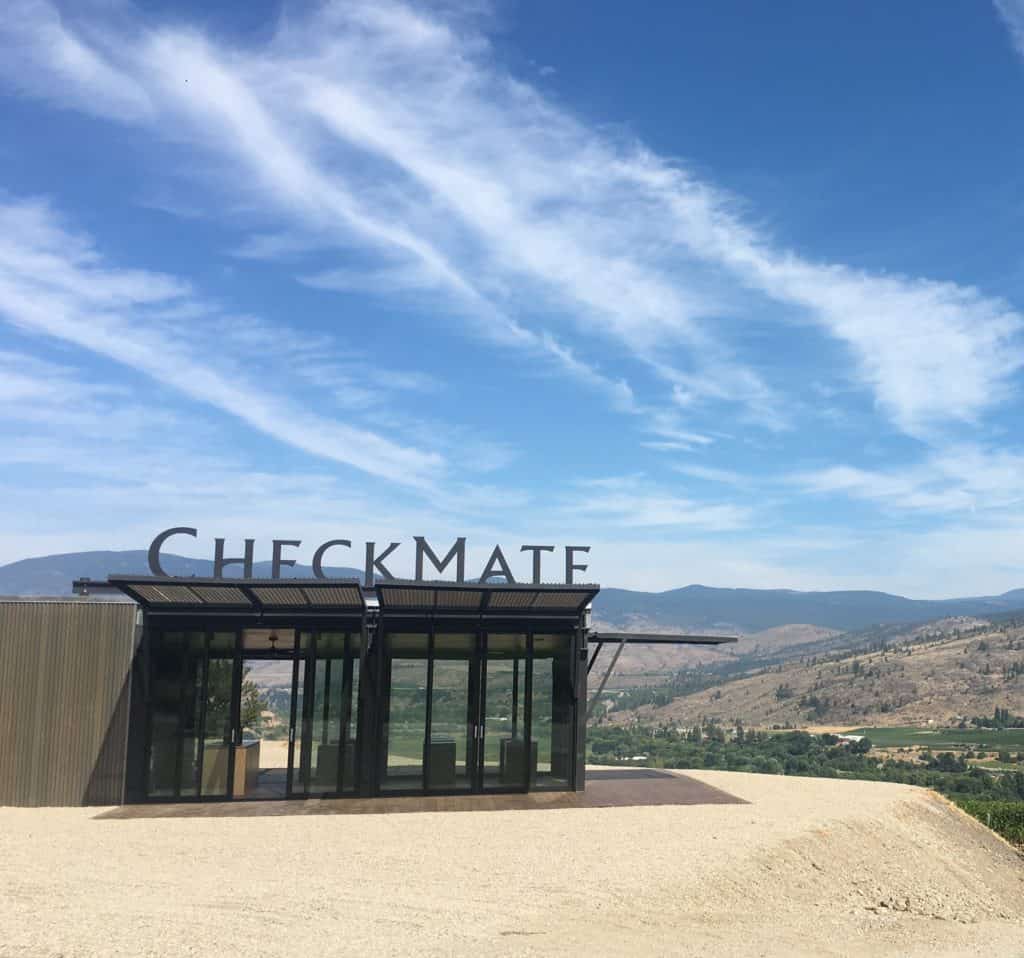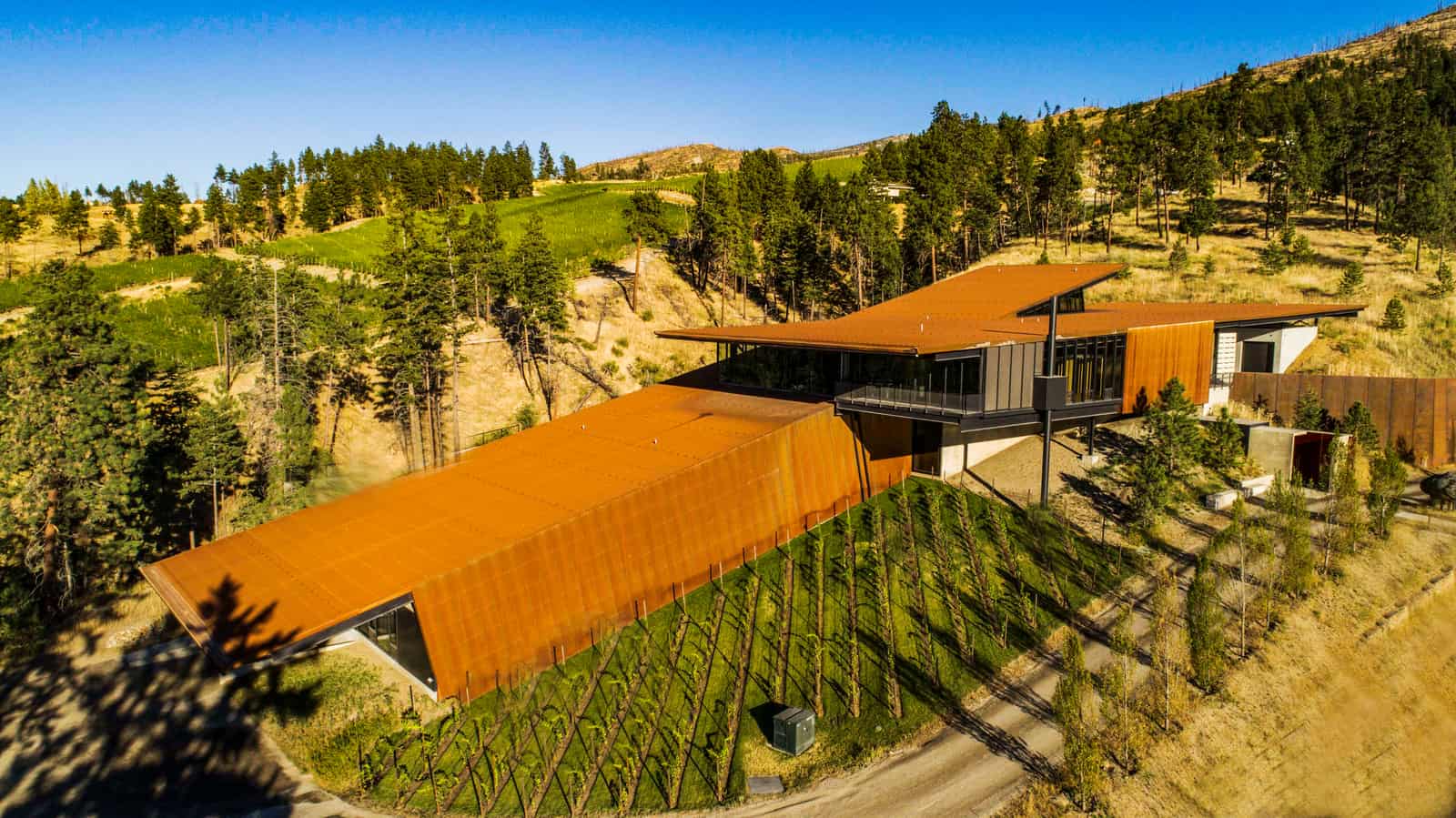PHOTOS COURTESY OF THE VON MANDL ESTATES
It would be tough for any man-made structure to outshine the natural beauty of British Columbia’s Okanagan Valley—where ponderosa- and grapevine-lined hills dive into a glacially fed lake—but Anthony von Mandl’s wineries somehow manage, with aesthetically pleasing
modern designs that also facilitate the sustainable production of award-winning wines.
Take, for example, the Martin’s Lane Winery, a 100-percent gravity-flow facility carved into the hillside south of Kelowna that opened in 2017. Von Mandl collaborated with National Design Award–winning architect Tom Kundig on the steel structure, which has a steep, six-story configuration for the natural, gravity-fed production of distinct rieslings and pinot noirs. “How you place and integrate your winery into the landscape is of paramount importance,” von Mandl says. “Not only does it make a statement about your commitment to the environment and the region, but it defines how the winery will function and what your commitment is to make the very best wines possible.”
Also in 2017, Kundig and von Mandl established a boxy steel-and-glass
tasting room at CheckMate Artisanal Winery, about 75 miles south of Martin’s Lane, near the U.S. border. With a permanent winery still on the way, Kundig designed an interim structure that can fit on a flatbed truck and be moved around for future pop-ups. (Think of it as a metaphor for the duo’s dynamic partnership.)

Next is the redesign of CedarCreek Estate Winery, set to debut this spring. Von Mandl describes the property as “a series of contemporary farmhouses with exterior fieldstone facades”—a modern design that can blend into its setting as if it’s always been there. This ethos is indicative of his ambitions for the Okanagan Valley, which he calls “one of the world’s last great undiscovered wine regions.”
“We are stewards of this land and have an obligation to look after this region for future generations,” says von Mandl, who is in the process of converting all his family-owned estate vineyards to organic farming. Once he does, the Okanagan Valley could have the largest proportion of certified organic vineyards of any wine-producing region in the world. “Sustainability,” he says, “is critical to long-term success.”
